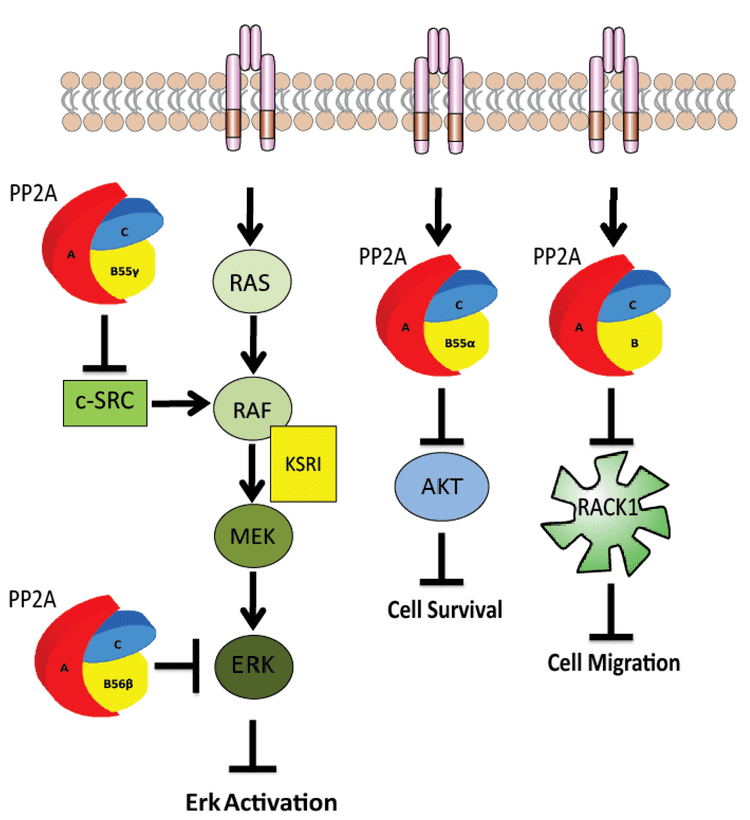HUGO 9299 RefSeq NM_002715 | Entrez 5515 OMIM 176915 UniProt P67775 | |
 | ||
Gene music using protein sequence of ppp2r2b protein phosphatase 2 regulatory subunit b beta
Protein phosphatase 2 (PP2), also known as PP2A, is an enzyme that in humans is encoded by the PPP2CA gene. The PP2A heterotrimeric protein phosphatase, is ubiquitous and has a conserved serine/threonine phosphatase with broad substrate specificity and diverse cellular functions. Among the targets of PP2A are proteins of oncogenic signaling cascades, such as Raf, MEK, and AKT.
Contents
- Gene music using protein sequence of ppp2r2b protein phosphatase 2 regulatory subunit b beta
- Gene music using protein sequence of ppp2r2a protein phosphatase 2 regulatory subunit b alpha
- Structure and function
- Drug discovery
- References
Gene music using protein sequence of ppp2r2a protein phosphatase 2 regulatory subunit b alpha
Structure and function
PP2A consists of a dimeric core enzyme composed of the structural A and catalytic C subunits, and a regulatory B subunit. When the PP2A catalytic C subunit associates with the A and B subunits several species of holoenzymes are produced with distinct functions and characteristics. The A subunit, a founding member of the HEAT repeat protein family (huntington-elongation-A subunit-TOR), is the scaffold required for the formation of the heterotrimeric complex. When the A subunit binds it alters the enzymatic activity of the catalytic subunit, even if the B subunit is absent. While C and A subunit sequences show remarkable sequence conservation throughout eukaryotes, regulatory B subunits are more heterogeneous and are believed to play key roles in controlling the localization and specific activity of different holoenzymes. Multicellular eukaryotes express four classes of variable regulatory subunits: B (PR55), B′ (B56 or PR61), B″ (PR72), and B‴ (PR93/PR110), with at least 16 members in these subfamilies. In addition, accessory proteins and posttranslational modifications (such as methylation) control PP2A subunit associations and activities.
The two catalytic metal ions located in PP2A's active site are manganese.
Drug discovery
PP2 has been identified as a potential biological target to discover drugs to treat Parkinson's disease and Alzheimer's disease, however as of 2014 it was unclear which isoforms would be most beneficial to target, and also whether activation or inhibition would be most therapeutic.
PP2 has also been identified as a tumor suppressor for blood cancers, and as of 2015 programs were underway to identify compounds that could either directly activate it, or that could inhibit other proteins that suppress its activity.
